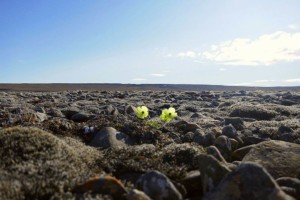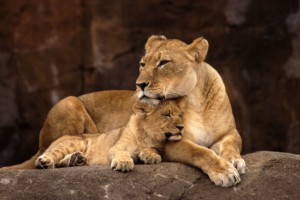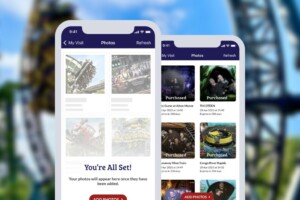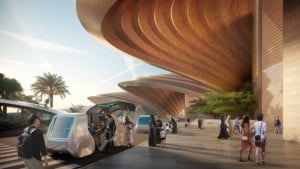
 By Stacey Tarpley, PGAV Destinations.
By Stacey Tarpley, PGAV Destinations.
They’re calling this “de-extinction.’ Although the species they are considering do not actually include dinosaurs, the conversation remains the same: Why de-extinction?
As I’ve sat considering the quandary myself, I quickly realized many of the issues brought up with de-extinction will likely affect zoos and aquariums and, in fact, directly parallel questions these institutions face.jpg) already. The first being: Why zoos?
already. The first being: Why zoos?
The answer is the same for both zoos and de-extinction, and often, the case for de-extinction could be made by examining the benefits of zoos and aquariums in general.
1. Education
Whether through formal group programs or free-choice learning (guests wandering the exhibits at their own speed, informally), zoos and aquariums offer some of the best opportunities to learn about biology, evolution, nature and conservation outside of a classroom environment. Seeing live animals first-hand captures the imagination of the learner increasing the likelihood to investigate further and, possibly more importantly, fosters empathy and motivates to take action to protect them.
2. Research
Zoos and aquariums have historically been centers of research. Early zoologists spent endless hours comparing the physiologies and behaviors of animals in captivity, and today zoos are working hard on tackling issues related to population management, genetics, and even psychology through working with live, captive animals. Additionally, unidentified technology and husbandry advances will no doubt result from  de-extinction as it has from zoo and aquarium research.
de-extinction as it has from zoo and aquarium research.
3. Conservation
A lynchpin of modern zoos and aquariums, conservation is directly benefitted through increased public awareness of critical conservation issues and by actual in-situ (or, in-the-wild) programs instated by institutions. De-extinction has the added benefit of possibly encouraging remediation of ailing habitats in order to re-introduce animals to their natural homes.
4. Recreation
Zoo and aquarium guests, by and large, visit these institutions because it’s fun. It’s a chance to get away from the city, to escape and connect with nature’and with each other. Going to the zoo is cool, and watching a Saber-Toothed Tiger rip into dinner would also be pretty dang amazing. As one scientist admitted, we’d do it because we can.
Furthermore, these four tenets are widely recognized as the pillars of modern zoos and aquariums. Read any zoo’s mission and you’ll  see some variant of these four elements. All are equally important to the success of the institution, often despite the public’s lack of awareness of the work. Interestingly, the final tenet’that of Recreation’is possibly the most controversial in both cases.
see some variant of these four elements. All are equally important to the success of the institution, often despite the public’s lack of awareness of the work. Interestingly, the final tenet’that of Recreation’is possibly the most controversial in both cases.
Society’s relationship to nature has evolved over the centuries from that of fear and later, dominance, to understanding and eventually into today’s ideal of stewardship. We now place a high value on conservation and increasingly embrace the “green culture’; however, this movement toward a full environmentalist ethic is in direct conflict with our ever-increasing Nature Deficit Disorder (our physical distancing from actual nature) and Culture of Connectivity and Instant Gratification, as illustrated by the rise and pervasiveness of digital and social media. Because of this paradoxical cultural phenomenon, modern zoos are faced with seemingly contradictory expectations from the public:
- Deliver a fun experience, up-close and immediate with animals
- Function as a sanctuary whereby the health and welfare of the animals (in captivity and in the wild) is job #1
In order to successfully deliver both, modern zoos and aquariums must meet the needs of three separate user groups (far more than most other institutions): the public, the animals, and the staff. Fail to provide for any one of these groups, and the institution is doomed. Ultimately, in order to meet the disparate expectations of the public, the zoo must undertake a careful balancing act, whereby the sweet spot lies in the intersection of Education and Entertainment. Too much Education and the  guests are underwhelmed. The experience is no longer fun. It is work. It is school. Too much focus on Entertainment, and the experience is no longer wholesome and responsible. It is commonplace amusement.
guests are underwhelmed. The experience is no longer fun. It is work. It is school. Too much focus on Entertainment, and the experience is no longer wholesome and responsible. It is commonplace amusement.
Despite what critics say, zoos and aquariums provide an authentic nature connection. The animals themselves are nature. They are living, breathing, eating, mating, pooping. They are right there. Within sight, within earshot, sometimes within touch, usually within smell. They are not sanitized. They are dirty. They are real. And beyond the authentic experience, zoos and aquariums are truly working for conservation. They increase awareness of animals’ struggles. They support researchers and conservationists in the wild. They oftentimes lead conservation programs themselves, through rescue and rehab programs as well as leading on-site research into animal behavior.
The idea of whether or not we should be saving species from extinction is not today’s question. Whether or not we should be bringing them back for a second chance, however, is. Personally, I’m leaning toward “Yes, we should do this–but only for those animals extinct by direct human impact’ such as the Passenger Pigeon. Once we’ve succeeded in cloning these animals, and assuming we can overcome the issue of lack of genetic diversity for a sustainable population, we’re faced with the challenge of where to put them. The romantic answer is to “The Wild’, but upon examination, The Wild is simply a fallacy. In most cases, the habitats of these now extinct s pecies have been overtaken by human development or, as in the case of the soon-to-be-lost Red River Softshell Turtle, simply too polluted for habitation. One of two things can happen: we’ll get our acts together, create new habitats and restore polluted ecosystems; or, these de-extinct animals will make their ways to zoos and aquariums.
pecies have been overtaken by human development or, as in the case of the soon-to-be-lost Red River Softshell Turtle, simply too polluted for habitation. One of two things can happen: we’ll get our acts together, create new habitats and restore polluted ecosystems; or, these de-extinct animals will make their ways to zoos and aquariums.
This is not so far-fetched. Zoos and aquariums have long been likened to Arks; saving species that no longer have much hope in The Wild. In some cases, the species only exists in captivity; and in others, captivity was the stepping stone to re-introduction of locally and universally extinct-in-the-wild species.
Taking on these animals will once again likely push zoos and aquariums directly into the spotlight, highlighting the ethical grey zones they and their critics are constantly debating. But one thing is certain: maintaining the only herd of Wooly Mammoth on Earth would get people through the door. And that’s the goal.
It’s what you do once they’re in there that holds the highest import.







